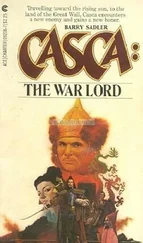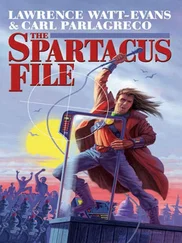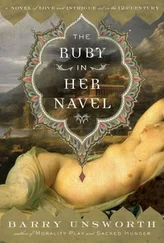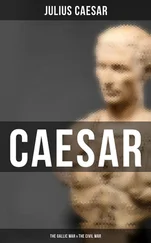Thucydides, Peloponnesian War 4.24.5, trans. Robert Strassler, ed., The Landmark Thucydides, a Comprehensive Guide to the Peloponnesian War (New York: Simon & Schuster, 1998), 236.
Thucydides, Peloponnesian War 6.2.4.
Cassius Dio, Book 11.14.29, 439-40, trans. http://penelope.uchicago.edu/Thayer/E/Roman/Texts/Cassius_Dio/ll*.html; cf. H.H. Scullard, The Elephant in the Greek and Roman World (Ithaca: Cornell University Press, 1974), 16,149,152.
Sallust, Histories frg. 4.26.
some scholars place the crossing further north, at Scilla, but that town lies outside the strait, where Plutarch, Crassus 10.3-4 insists on putting Spartacus.
Florus, Epitome 2.8.13.
Sallust, Histories frg. 4.27, trans. Patrick McGushin, Sallust, The Histories, vol. 2 Oxford: Clarendon Press, (1994), 43.
Cicero, Verrines 6.5.
Appian, Civil Wars, 1.119.552.
Appian, Civil Wars 1.119.552.
Plutarch, Crassus 10.7.
Plutarch, Crassus 10.8.
Appian, Civil Wars 1.118.551.
Plutarch, Crassus 10.8.
Appian, Civil Wars 1.119.553.
Appian, Civil Wars 1.119.553.
Appian, Civil Wars 1.119.554.
Plutarch, Crassus 11.3.
Paulinus of Nola, Poems 17.206.
technically Marcus Varro is correct, since Marcus had been adopted as an adult by one Terentius Varro, but for simplicity’s sake I use his birth name.
Valerius Maximus 6.2.8.
Tacitus, Annals 3.73; cf. Appian, Civil Wars 1.120.556.
Tacitus, Annals 3.73.
Sallust, Histories frg. 4.36.
Tacitus, Annals 4.51.
Appian, Civil Wars 1.119.552.
Sallust, Histories frg. 4.37, trans. Patrick McGushin, Sallust, The Histories, vol. 2 (Oxford: Clarendon Press, 1994), 44.
Caesar, Gallic War, cited without reference in Jean-Louis Brunaux, The Celtic Gauls: Gods, Rites and Sanctuaries, trans. Daphne Nash (London: Seaby, 1988), 102.
Gallic inscription, cited in Philip Freeman, The Philosopher and the Druids: A Journey Among the Ancient Celts (New York: Simon & Schuster, 2006), 125.
Sallust, Histories frg. 4.40.
Plutarch, Crassus 11.5.
Ammianus Marcellinus, Histories 15.12.
or, more accurately, *riyos, personal communication, Professor Michael Weiss, Department of Linguistics, Cornell University.
Plutarch, Crassus 11.5.
http://www.comune.giungano.sa.it/.
Orosius, Histories 5.24.6.
Livy, Periochae 97; Frontinus, Stratagems 2.5.34.
Plutarch, Crassus 11.5.
Plutarch, Crassus 11.5.
Caesar, Gallic War 1.26.
Plutarch, Crassus 11.6.
Orosius, Histories 5.24.6.
Appian, Civil Wars 1.120.557.
Plutarch, Crassus 11.6.
Plutarch, Crassus 11.6.
Orosius, Histories 5.24.3.
Orosius, Histories 5.24.3.
Suetonius, Life of Horace.
On Duties 1.42.
Appian, Civil Wars 1.120.557.
Plutarch, Crassus 11.8.
Appian, Civil Wars 1.120.557.
Appian, Civil Wars 1.120.557.
Orosius, Histories 5.24.7.
Florus, Epitome 2.7.9-12; Diodorus Siculus 36.10.3.
http://en.wikipedia.org/wiki/Italy_Earthquake_of_1980.
Sallust, Histories frg. 4.39; Plutarch, Comparison of Nicas and Crassus (Crassus 36(3).2); cf. Patrick McGushin, Sallust, The Histories, vol. 2 (Oxford: Clarendon Press, 1994), 155-6.
Plutarch, Crassus 11.8.
Frontinus, Stratagems 4.7.2.
Caesar, African War 29.
Plutarch, Sulla 21.2.
Plutarch, Crassus 11.8.
Plutarch, Crassus 11.9.
Florus, Epitome 2.26.13-16.
there was a revolt in the southern Thracian mountains in AD 26. When besieged, the braver spirits ‘after the manner of their country were disporting themselves with songs and dances in front of the rampart’ (Tacitus, Annals 4.47, trans. http://www.perseus.tufts.edu/cgi-bin/ptext?lookup=Tac.+Ann. +4.47). See R.F. Hoddinott, The Thracians (London: Thames & Hudson, 1981), 130.
Plutarch, Crassus 11.9.
Plutarch, Crassus 11.10.
Florus, Epitome 2.8.14.
Plutarch, Crassus 11.9.
Plutarch, Crassus 11.10.
Appian, Civil Wars 1.120.557.
Sallust, Histories frg. 4.41.
Florus, Epitome 2.8.14.
Appian, Civil Wars 1.120.557.
Florus, Epitome 2.8.14.
Seneca, Controversies 9.6, cited in Alison Futrell, The Roman Games (Oxford: Blackwell Publishing, 2006), 144.
Appian, Civil War 1.120.558.
Florus, Epitome 2.8.14, trans. Brent D. Shaw, Spartacus and the Slave Wars (Boston: Bedford/St Martin’s, 2001), 155.
Livy, Periochae 97; Orosius, Histories 5.24.7. The casualty figure of 12,300 in Plutarch, Pompey 21.2 probably refers to the Battle of Cantenna.
Appian, Civil War 1.120.558.
Theodor Mommsen, ed., Corpus Inscriptionum Latinarum, vol. X, Inscriptiones Bruttiorum, Lucaniae, Campaniae, Sicilae, Sardiniae latinae (Berlin: G. Reimer, 1883) Part 2, 8070.3 = A. Degrassi and I. Krummrey, eds., Inscriptiones Latinae antiquissimae ad C. Caesaris mortem vol. I, 2nd edition (Berlin: De Gruyter, 1986) Part 2, Fasc. 4,961.
Appian, Civil War 1.120.559.
‘terrible cross’ of the slaves in Plautus (Martin Hengel, Crucifixion in the Ancient World and the Folly of the Message of the Cross (Philadelphia: Fortress Press, 1977), 7, n.13.
Читать дальше












